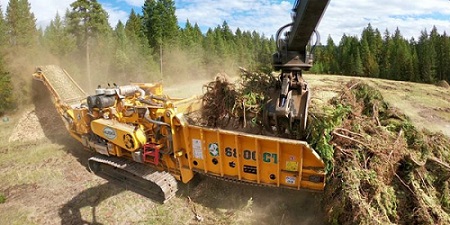
These hold the potential to revolutionize the way we produce and consume energy.
In today's rapidly changing world, the search for sustainable and renewable energy sources has become more critical than ever. With concerns about climate change and depleting fossil fuel reserves, innovative solutions are needed to power our planet's future.
Biomass energy harnesses the power of organic matter, such as plants, wood, and agricultural waste, to generate heat, electricity, and even biofuels. It offers several significant advantages over traditional fossil fuels, making it an attractive and environmentally friendly alternative. Advancements in biomass conversion technologies have played a pivotal role in maximizing energy output while minimizing waste.
Traditional biomass energy systems primarily relied on agricultural crops, such as corn and sugarcane, as feedstocks for biofuel production. However, ongoing research and development have expanded the range of available feedstocks, making the process more sustainable and less prone to competition with food production. Today, biomass feedstocks include various types of plant matter, wood residues, algae, and even waste materials. This diversification not only ensures a more abundant and reliable energy supply but also reduces the strain on valuable agricultural land.
While first-generation biofuels have made significant contributions to the renewable energy landscape, second-generation biofuels are emerging as a game-changer. These advanced biofuels are produced from non-food feedstocks, such as agricultural residues, forestry waste, and dedicated energy crops. The use of these feedstocks minimizes the carbon footprint associated with biofuel production and mitigates concerns about food scarcity. With ongoing advancements in biofuel refining techniques, second-generation biofuels are becoming increasingly cost-effective and commercially viable.
Another exciting development in the biomass energy sector is the concept of integrated biorefineries. These facilities go beyond simple energy generation by utilizing a holistic approach to biomass utilization. Integrated biorefineries combine multiple conversion processes to produce a range of valuable products, including biofuels, biochemicals, and bioplastics. By extracting maximum value from biomass feedstocks, these refineries create a sustainable and economically viable model for the future.
One of the most significant advantages of biomass energy lies in its ability to address waste management challenges. Organic waste, such as agricultural residues and food scraps, can be transformed into useful energy through anaerobic digestion or thermal processes. This not only reduces the environmental impact of waste disposal but also creates a valuable resource. By diverting organic waste from landfills, biomass energy helps mitigate greenhouse gas emissions and prevents the release of harmful pollutants into the environment. Additionally, the byproducts of biomass energy production, such as nutrient-rich digestate from anaerobic digestion, can be used as fertilizers, closing the loop on nutrient recycling and promoting sustainable agricultural practices. Through sustainable waste management strategies that incorporate biomass energy, we can minimize waste, conserve resources, and contribute to a cleaner and healthier planet.
The advancements in biomass energy and biofuels discussed in this article represent just a glimpse of the potential that lies ahead. With ongoing research, technological breakthroughs, and collaborative efforts, we can continue to refine and expand the applications of biomass energy, making it an increasingly viable and widespread solution to our global energy needs.
CBI is one of the organisations that is providing optimal solutions. It all starts with CBI’s unique offset-helix rotor. Based on the principles of kinetic energy, the heavy-duty rotors require less power to rotate continuously, while aggressively outperforming other rotors in terms of throughput. The optimized design of CBI’s heavy-duty anvils, screens, hammer configuration and cutting angles work in concert to deliver a superior cutting process and highest-value end product. This can, for example, be leveraged by manufacturers of wood pellets (when the feed stock is logs) because it eliminates costly phases of their manufacturing process. A single pass through a CBI biomass chipper can yield short-chip (micro-chip) material that doesn’t need to go through the initial hammermill process before entering the dryer. The eliminated process greatly reduces power consumption and emissions. Source